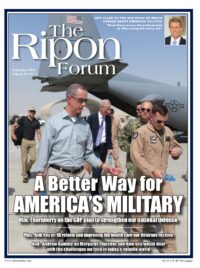
What is the National Security Council for?
The coming transition to a new administration, following years of debate over the role of President Obama’s NSC, has raised this and other important questions about the size and influence of the NSC and its staff.
As the NSC staff has grown to around 400 people,[1] critics – including former members of the Obama Cabinet[2] – have faulted it for strategic drift, inefficiency, and micromanagement of the uniformed military. Congressional leaders have proposed language to cap the NSC’s size and subject the National Security Advisor to Senate confirmation if the cap is breached.
If the legislation were to become law, the next president would face a fundamental decision about how to structure his or her administration. Will he or she want the NSC to be an “honest broker,” teeing up decisions for the president and overseeing implementation, or should it be a mini-agency within the White House, centralizing power and reducing the sway of even cabinet members in executive policymaking? In short, a decision about the structure of the NSC will inevitably have an impact on not only the office of the president, but also the whole of the national security bureaucracy.
The House and Senate Armed Services Committees have proposed language in their National Defense Authorization Acts that would cap the NSC permanent staff at 150 people.
To understand how we’ve reached this point, it’s useful to remind ourselves how the NSC has evolved since its establishment after the Second World War, from a small group charged with coordinating the president’s paper flow in national security matters to a large and influential organization in its own right. Presidents have each used the NSC differently, according to their personal style and preferences,[3] but the trend has been toward an “operational” NSC, centralizing national security policymaking in the White House and away from a “coordinating” NSC.
The growth of the national security state itself and its attendant bureaucracy has also contributed to a larger NSC. The creation of the Department of Homeland Security, the Office of the Director of National Intelligence, and other entities all create demand for more staff attention at the top of the food chain and more perceived need by a president to make sure the whole of the executive branch is on-board with his agenda. Although these developments help to explain why the NSC has grown in size and influence, each president’s choices as chief executive ultimately determine how the NSC will function and, in turn, the balance of power relative to and between the cabinet agencies.
Against this backdrop, the House and Senate Armed Services Committees have proposed language in their National Defense Authorization Acts that would cap the NSC permanent staff at 150 people. If the cap is breached, the National Security Advisor would become subject to Senate confirmation – an assertion on the part of Congress that if the NSC is going to have the size and influence of an agency, it should be subject to congressional oversight as an agency, not as a White House staff office with the protection of executive privilege over documents and deliberations.[4]
These reforms, if adopted, would force the next president to decide: is the NSC a coordinating, advisory body, or is it an agency? If it is an advisory body, the president could direct cabinet secretaries to empower the policymaking teams in their respective agencies, disempowering the NSC and restoring its role as a coordinator of policy-making and implementation. If the NSC is an “agency,” the next president will have to consider the possibility of televised Senate confirmation hearings for his or her National Security Advisor and congressional oversight of some of the most sensitive presidential decision documents and deliberations.
These reforms, if adopted, would force the next president to decide: is the NSC a coordinating, advisory body, or is it an agency?
Because the National Security Advisor has always been a White House staff position, and because the NSC is ultimately an instrument of presidential decision-making, subjecting the National Security Advisor to Senate confirmation would have far-reaching implications for the president as “the unitary executive,” who relies on the National Security Advisor to adjudicate differences between agencies on the president’s behalf and to provide confidential advice. Congress, as well, may have to consider whether its current committee structure and jurisdiction is appropriate to the oversight of an organization that oversees the entire national security “interagency.”
After the debate during the Obama years over the role and influence of the NSC, it is worth remembering that each iteration of the NSC is a product of a particular president and a particular administration, and that it serves that particular president in his or her national security decision-making. On November 8th, we will find out who the next president will be. He or she will have precious little time to put an NSC system into place.
Luke Strange is the Government Relations Associate Director for Foreign and Defense Policy at the American Enterprise Institute, and a former congressional staffer. Follow him on Twitter @ljsiv.
__________________________________
[1] Karen DeYoung, “How the Obama White House Runs Foreign Policy,” Washington Post, August 4, 2015: https://www.washingtonpost.com/world/national-security/how-the-obama-white-house-runs-foreign-policy/2015/08/04/2befb960-2fd7-11e5-8353-1215475949f4_story.html
[2] Robert Gates, Duty. Vintage, May 2015
[3] Peter Rodman, Presidential Command. Vintage, January 2010
[4] Kathleen J. McInnis, “’Right-Sizing’ the National Security Council Staff?” Congressional Research Service, June 30, 2016: https://www.fas.org/sgp/crs/natsec/IN10521.pdf




